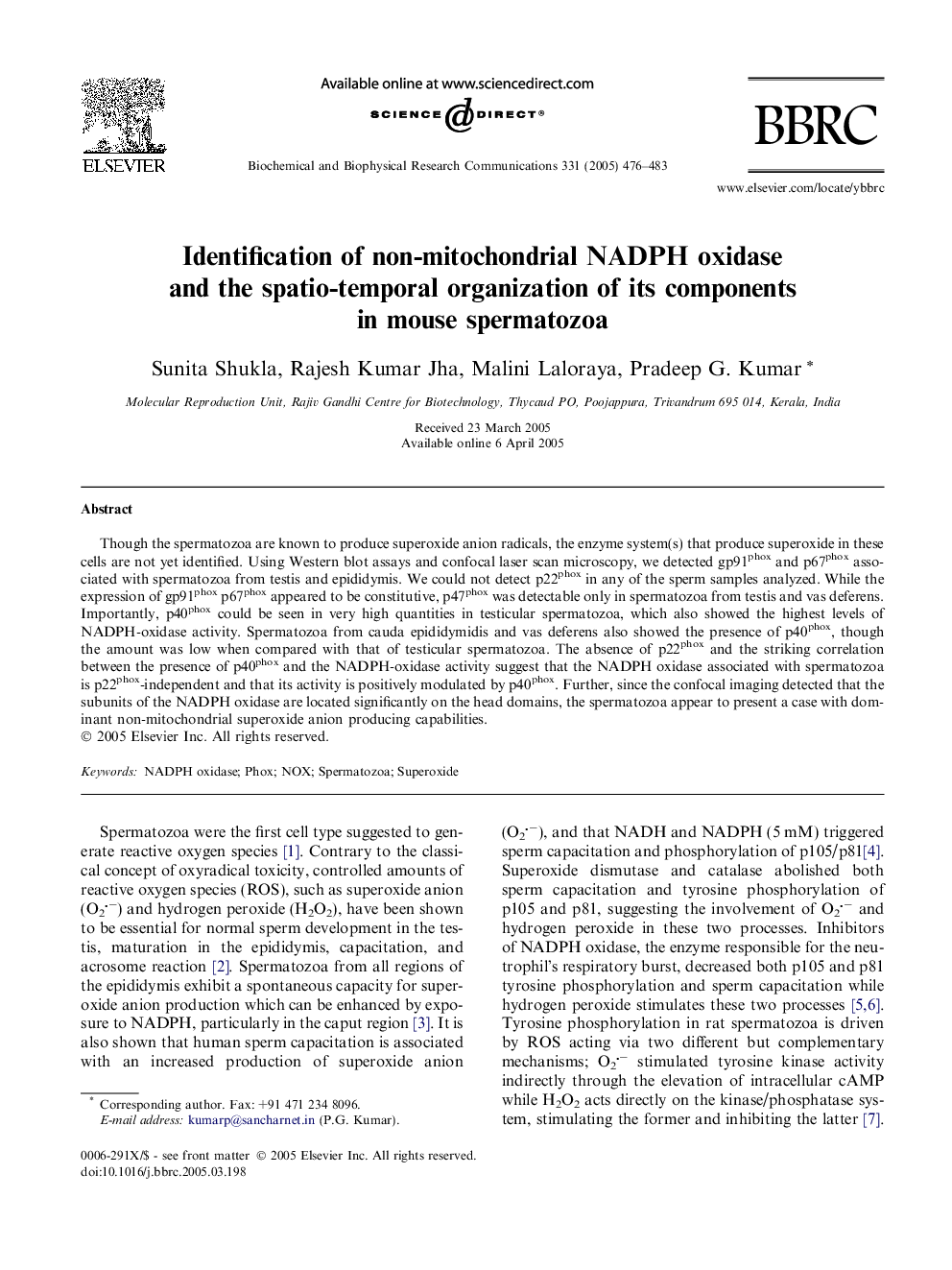| Article ID | Journal | Published Year | Pages | File Type |
|---|---|---|---|---|
| 10769963 | Biochemical and Biophysical Research Communications | 2005 | 8 Pages |
Abstract
Though the spermatozoa are known to produce superoxide anion radicals, the enzyme system(s) that produce superoxide in these cells are not yet identified. Using Western blot assays and confocal laser scan microscopy, we detected gp91phox and p67phox associated with spermatozoa from testis and epididymis. We could not detect p22phox in any of the sperm samples analyzed. While the expression of gp91phox p67phox appeared to be constitutive, p47phox was detectable only in spermatozoa from testis and vas deferens. Importantly, p40phox could be seen in very high quantities in testicular spermatozoa, which also showed the highest levels of NADPH-oxidase activity. Spermatozoa from cauda epididymidis and vas deferens also showed the presence of p40phox, though the amount was low when compared with that of testicular spermatozoa. The absence of p22phox and the striking correlation between the presence of p40phox and the NADPH-oxidase activity suggest that the NADPH oxidase associated with spermatozoa is p22phox-independent and that its activity is positively modulated by p40phox. Further, since the confocal imaging detected that the subunits of the NADPH oxidase are located significantly on the head domains, the spermatozoa appear to present a case with dominant non-mitochondrial superoxide anion producing capabilities.
Related Topics
Life Sciences
Biochemistry, Genetics and Molecular Biology
Biochemistry
Authors
Sunita Shukla, Rajesh Kumar Jha, Malini Laloraya, Pradeep G. Kumar,
